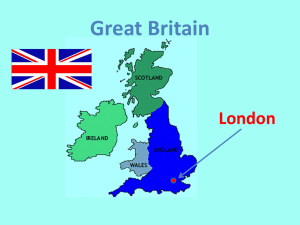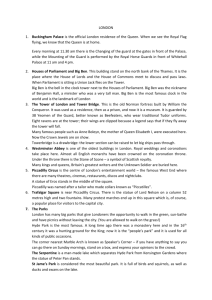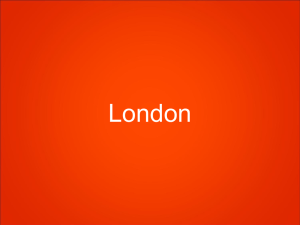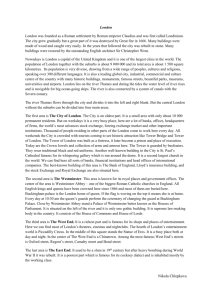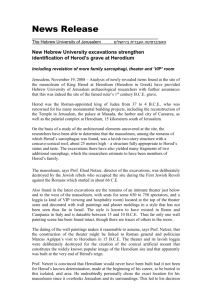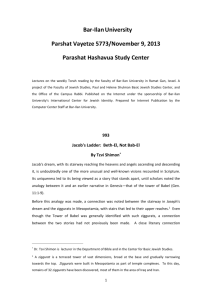The eastern tower at erode upper palace
advertisement
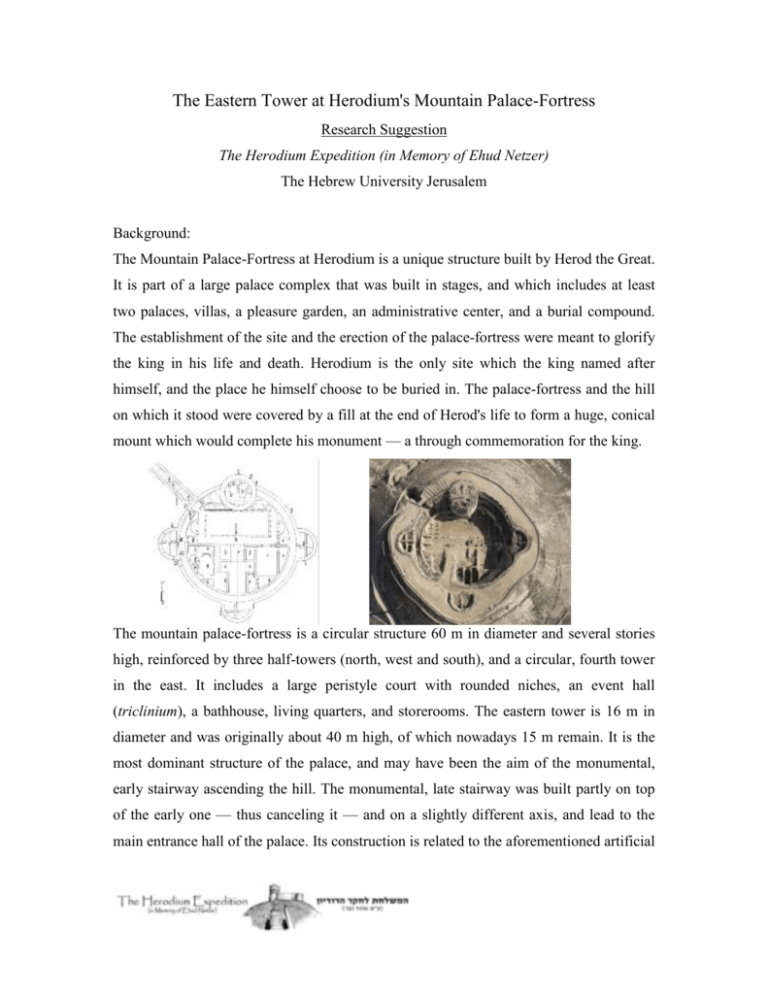
The Eastern Tower at Herodium's Mountain Palace-Fortress Research Suggestion The Herodium Expedition (in Memory of Ehud Netzer) The Hebrew University Jerusalem Background: The Mountain Palace-Fortress at Herodium is a unique structure built by Herod the Great. It is part of a large palace complex that was built in stages, and which includes at least two palaces, villas, a pleasure garden, an administrative center, and a burial compound. The establishment of the site and the erection of the palace-fortress were meant to glorify the king in his life and death. Herodium is the only site which the king named after himself, and the place he himself choose to be buried in. The palace-fortress and the hill on which it stood were covered by a fill at the end of Herod's life to form a huge, conical mount which would complete his monument — a through commemoration for the king. The mountain palace-fortress is a circular structure 60 m in diameter and several stories high, reinforced by three half-towers (north, west and south), and a circular, fourth tower in the east. It includes a large peristyle court with rounded niches, an event hall (triclinium), a bathhouse, living quarters, and storerooms. The eastern tower is 16 m in diameter and was originally about 40 m high, of which nowadays 15 m remain. It is the most dominant structure of the palace, and may have been the aim of the monumental, early stairway ascending the hill. The monumental, late stairway was built partly on top of the early one — thus canceling it — and on a slightly different axis, and lead to the main entrance hall of the palace. Its construction is related to the aforementioned artificial mount project. Halfway-up both stairways is located Herod's mausoleum, as well as the royal theater that had been destroyed in the wake of the creation of the conical hill. Research at the site: The Mountain Palace-Fortress was excavated during the 1960s by Franciscan Father Corbo. Since the early 1970s research at the site is on behalf of the Archaeological Institute of the Hebrew University of Jerusalem, and the excavations were directed mainly by the late Prof. Ehud Netzer, who lost his life in a tragic accident at the site in 2010. Since then Roi Porat, Yakov Kalman and Rachel Chachy, the team that had been working with him all the years, continue his lifework. Aim of the proposed research: The proposed research is meant to achieve a thorough understanding of the enigmatic structure of the eastern tower of the Mountain Palace-Fortress; the real reason of its construction, its relationship to the rest of the palace. and in what way it might have been connected to the king's burial. Research method: 1. Research of the eastern tower in several stages: — a thorough study of its upper remains (laser survey of the tower); — the exposure of the north-eastern base of the tower in order to locate a possible entrance; — geo-physical survey including radar penetration; — deep drilling into the core of the tower in order to try to locate an inner chamber. 2. Research aimed at locating a hidden structure/entrance to which the early stairway might have lead: — geo-physical survey of the palace courtyard; — excavation of the area immediately below the tower. 3. Research aimed at locating the destination of the early stairway: — geo-physical survey of the outside area between the entrance to the palace and the eastern tower in order to locate the top of the stairway; — excavation of this specific area in order to understand the relationship of the early stairway to the palace. 4. Processing of the finds, followed by the publication of the reports. Budget estimate: 1. 37,000$ 2. 23,000$ 3. 23,000$ 4. 20,000$ Total: 103,000$


